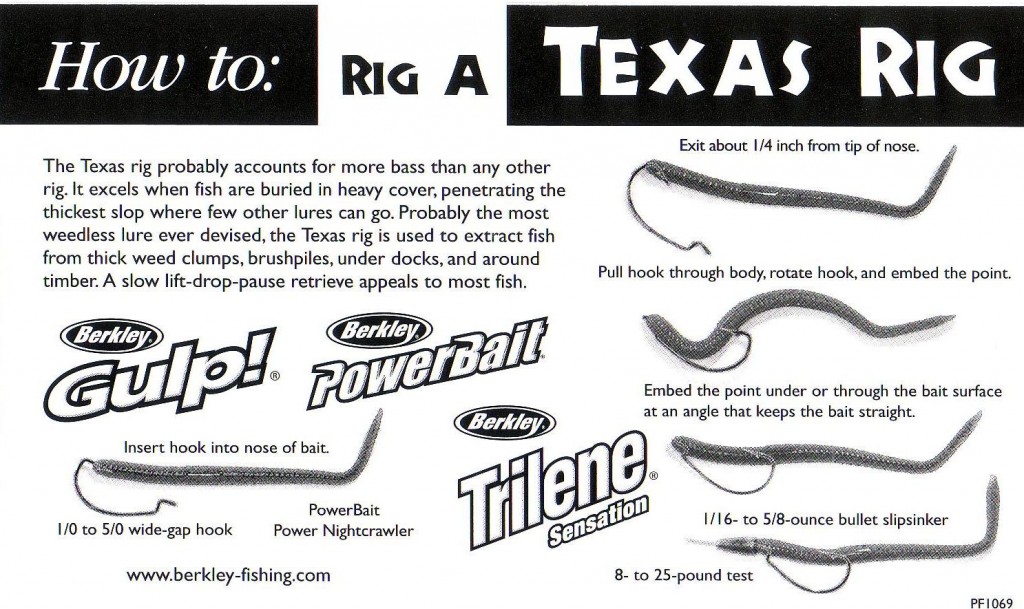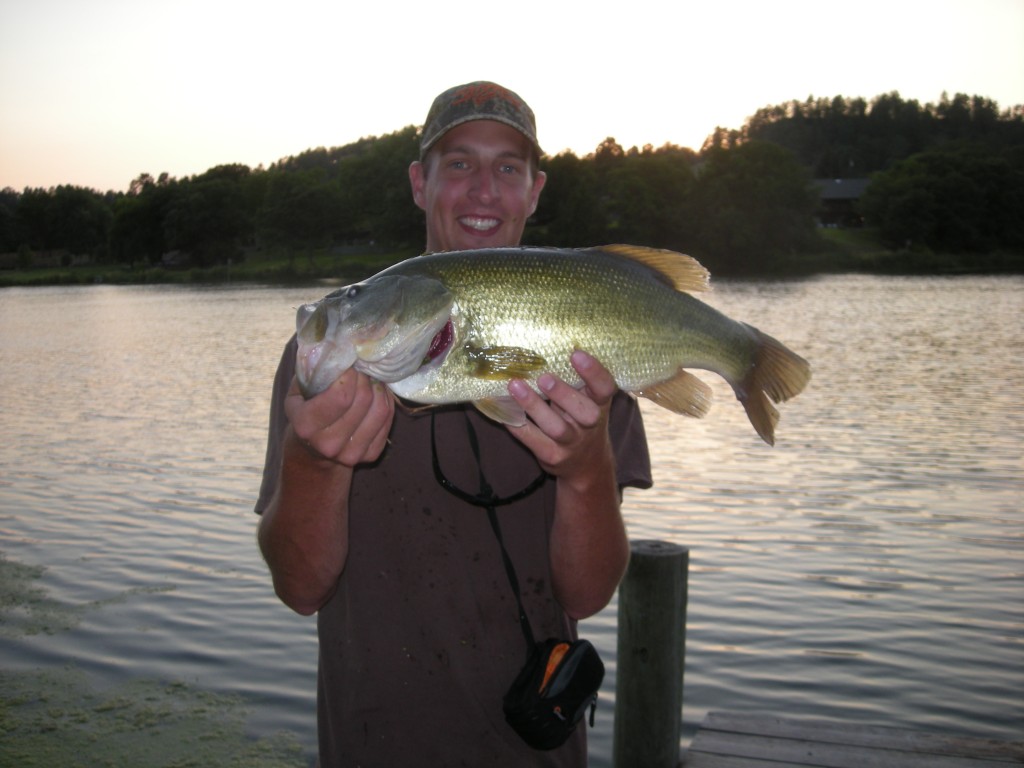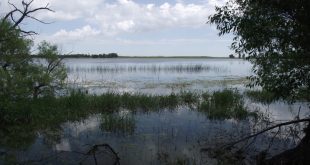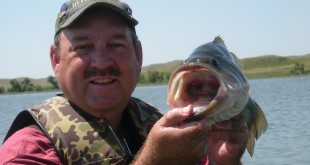We are rolling into summer now and that means that aquatic plants that grow in many Nebraska waters are reaching their peak of coverage and height. As that happens, my phone starts ringing and I start seeing complaints on the internet about the “weeds” and how they make it too hard to fish!? I have to confess I am not very sympathetic to those complaints about the “weeds”.
Webster’s defines a “weed” as an undesirable plant. Rooted aquatic vegetation is some of the best habitat you can have for several species of fish and I refuse to refer to those plants as “weeds”. There are many benefits aquatic vegetation provides and if some anglers would learn to fish that vegetation they would come to appreciate it instead of cussing it. I could go into detail about some of the different aquatic plants that grow in Nebraska waters, good subject material for future blog posts, but here let me make some general comments about aquatic vegetation and how to fish it.
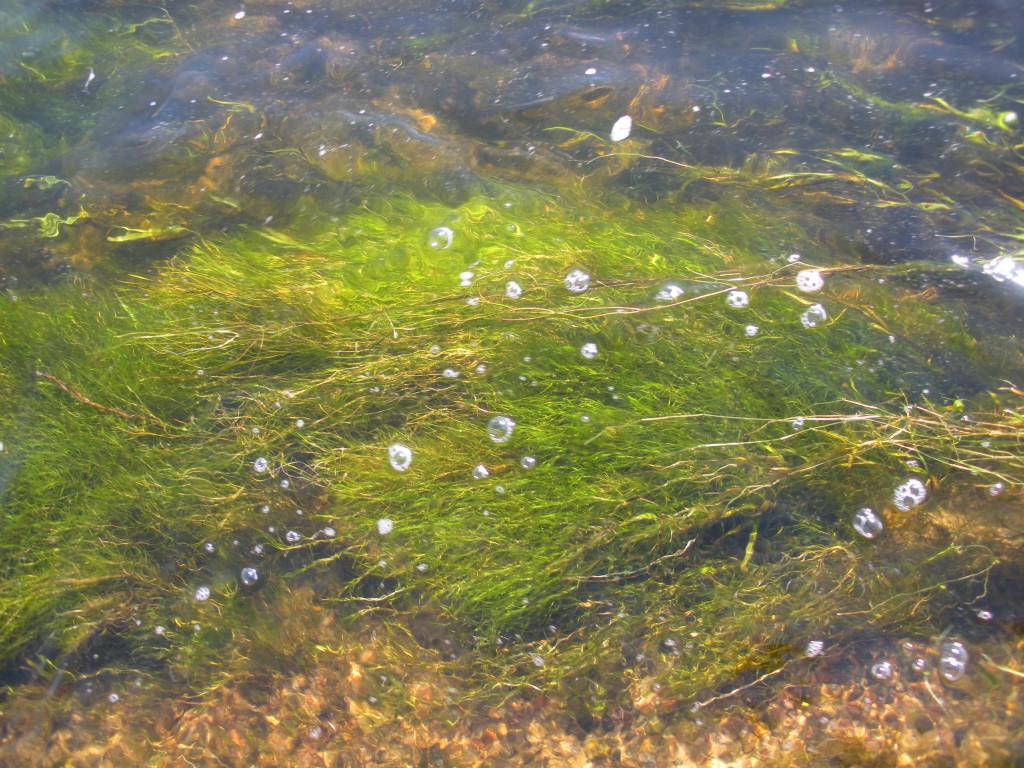
First, let me define some terms. When I say “aquatic vegetation” I am referring to plants like those pictured above–plants that grow in the water with roots that are attached to the bottom. There are a variety of those aquatic plants that grow in Nebraska waters; some of them grow all the way from the bottom and emerge above the surface of the water. Species like cattails and bulrushes, are good examples of those emergent aquatic plants. There are a whole bunch of other aquatic plants that grow from the bottom of a body of water and can grow all the way to the surface, but do not emerge above the surface. There are many species of pondweeds and coontail that are good examples of submergent aquatic vegetation. Another type of aquatic vegetation would be those species such as water lilies that have leaves and flowers that float on the surface, or to now contradict myself, water meal or duckweed that are free-floating on the surface and not rooted to the bottom. Those species would be good examples of floating aquatic vegetation.
Rooted aquatic vegetation is NOT “moss”! Moss grows on trees. Algae grows in the water, but up to this point I have been talking about rooted, aquatic plants, not freshwater algae. Let me mention a couple things about algae now. There are some species of algae that are more complex, advanced, and very much resemble rooted aquatic plants. For example, Chara, or more commonly “skunk grass” is found in many Nebraska sandpits and interstate lakes. Although skunk grass is technically an algae, it functions very much like submerged, rooted aquatic vegetation in the waters in which it is found (by the way, hold some of it up to your nose and you will know why it is called skunk grass). There are an almost infinite variety of other freshwater algae that can be found in Nebraska waters; many of those species simply free-float in the water, but there are some species that form mats on the surface. Typically, filamentous algae surface mats are formed over the tops of rooted, submerged aquatic vegetation that has reached its peak height to the surface of the water. Those surface mats of algae are also often called “moss”, but again remember, moss grows on trees!
It is true that waters can have unhealthy amounts of aquatic vegetation. However, when I say that I am referring in almost all cases to small bodies of water, farm ponds mostly, and I would tell you that unless those ponds have more than half of their area covered by aquatic vegetation that grows all the way to the surface they likely do NOT have too much aquatic vegetation as far as the fish are concerned. Small ponds that do have more than half their surface area covered by aquatic vegetation can have so much cover that predator fish, especially largemouth bass, cannot effectively control the numbers of panfish or other small fish. Other than that, most farm ponds with less than half their surface area covered by aquatic vegetation do NOT have a “weed” problem as far as this pointy-headed fisheries biologist is concerned. And, I would add that ponds with more than half their surface area covered by aquatic vegetation probably have bigger issues than “too many weeds”–in most cases those ponds have become so shallow that they may occasionally experience fish die-offs.
As already mentioned, aquatic plants provide cover for fish; they also provide a whole lot more. Almost every type of aquatic vegetation will be loaded with a variety of aquatic insects and other “creepy crawly” things that fish love to eat. Aquatic vegetation produces a lot of fish food! Aquatic plants also provide shade; enough shade that they can even cool the water a few degrees. In addition, plants, including aquatic plants, produce oxygen through the magic of photosynthesis, and that oxygen production can be very important to aquatic ecosystems. One last benefit I will mention is that aquatic plants can protect shorelines and bottom substrates from wind and wave action and therefore improve water quality.
To sum up–aquatic vegetation–I LOVE IT!
So, how does a person fish the stuff? Well, one benefit aquatic vegetation provides is a refuge for fish. Yes, there are fish “burrowed” into the aquatic weeds that are very hard to get to. That is good! It protects those fish from anglers and other predators! However, they do not stay buried in the middle of the thickest aquatic vegetation all the time. When the fish are active, feeding, they are more likely to be mobile and to move towards openings, pockets and edges. One fishing strategy for aquatic vegetation is to fish any openings and edges you can find. Edges will include the outside edge, deep edge, where the water becomes deep enough that those aquatic plants cannot grow, but do not overlook shallow, inside edges either. I know those inside edges can be only a few feet deep and sometimes a lot less than that, but at times a variety of fish will use that inside edge! Bluegills will often cruise the shallow inside edge looking for a variety of aquatic and even terrestrial insects. Bass, big bass, will also cruise that shallow water, inside edge of aquatic vegetation preying on frogs or the bluegills.
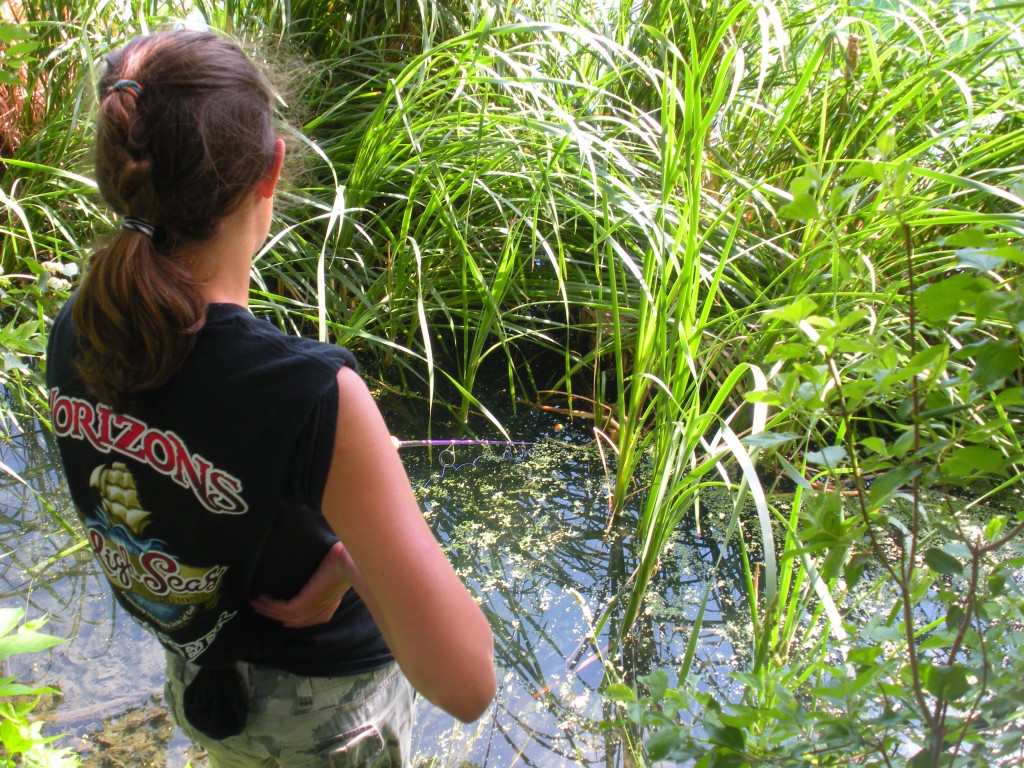
One other edge to look for is the top of the vegetation. In deeper water submerged aquatic vegetation may not grow all the way to the surface and feeding, cruising fish will roam over the top of that vegetation. Depth control of the baits or lures being fished is critical in fishing over the top of submerged aquatic vegetation, but spinnerbaits, crankbaits, plastic baits, jigs, swimbaits and a whole lot more can be used to fish the edge above the top of submerged vegetation. Your favorite bait or lure can be used over the top of submerged aquatic vegetation as long as you can control its depth. By the way, walleye anglers, listen up. . . . Walleyes love aquatic vegetation too and I have caught a darned lot of Nebraska walleyes over the top of submerged aquatic vegetation!
There are a whole host of “weedless” or semi-“weedless” baits and lures on the market. Walk into your local tackle shop and they probably have a whole aisle devoted just to spinnerbaits! Spinnerbaits work very well for many situations where you have to fish in and around aquatic vegetation. Another presentation that works in almost all aquatic vegetation is any kind of the infinite variety of plastic or “rubber” baits fished weedless–Texas rigged.
In most cases, when I am “Texas-rigging” “rubber” worms in, around, or over aquatic vegetation, I use no weight–rig the rubber bait without the “worm” sinker in front or any other type of weight. Those rubber baits have enough weight by themselves to cast and without the weight they are a slow, “fluttering”, very natural presentation. If you are fishing where you need to punch a bait through the top of the vegetation, you can add the worm sinker to a Texas-rigged plastic bait, or switch to a weedless jig-head.
Do not forget to fish the surface above and beside beds of aquatic vegetation! In fact, earlier I referred to surface mats of filamentous algae over the top of submerged aquatic vegetation. Those algae mats tend to be particularly frustrating for many anglers, but largemouth bass in particular will cruise under those algae mats preying on frogs sitting above. I have blogged about bass and their love of frogs before and suggested several baits that work in this situation, http://magazine.outdoornebraska.gov/2011/07/piggy-loves-kermit/ . The “scum frog” type baits can be cast to any openings and edges in the surface mats of algae, but do not be afraid to throw those baits right on top of the mats! Last July my son had this public water largemouth eat a scum frog-type bait right through a surface mat of algae. He had to winch the fish out and then dig through a big clump of aquatic vegetation and filamentous algae to find his Master Angler bass with his bait in its mouth!
Yes, you may need to “tackle up” to heavier line and stiffer rods to haul fish, especially large predator fish, out of aquatic vegetation. Personally, I prefer longer rods, 7 feet and longer, and believe that extra length is especially useful for setting hooks and hauling fish out of heavy cover. The “super lines” like SpiderWire, FireLine, PowerPro and my current favorite, Suffix 832 are very good lines to use when fishing aquatic vegetation. Those lines are very thin for their strength and have little if any stretch–properties that will help present baits and haul fish out of aquatic vegetation. Casting reels handle those lines well and can be paired up with a longer, stiffer rod, but medium-size and larger spinning reels coupled with matching rods can also get the job done.
Instead of cussing the “weeds”, understand aquatic vegetation and embrace it! They ain’t weeds! They ain’t “moss”! If you learn to love it, aquatic vegetation will provide more and bigger fish for you and I will bet those frustrations will vanish!
 Nebraskaland Magazine
Nebraskaland Magazine
